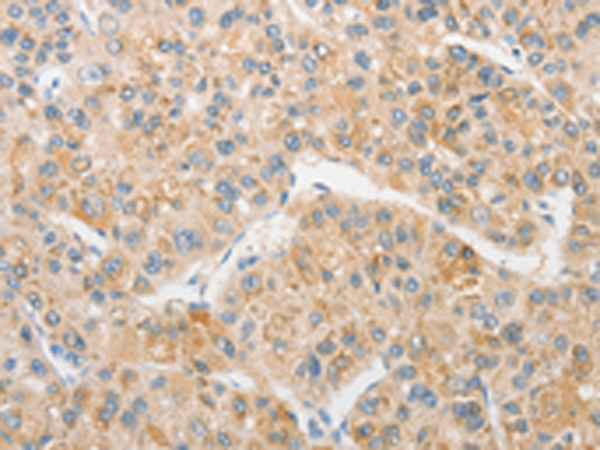

| WB | 咨询技术 | Human,Mouse,Rat |
| IF | 咨询技术 | Human,Mouse,Rat |
| IHC | 1/50-1/200 | Human,Mouse,Rat |
| ICC | 技术咨询 | Human,Mouse,Rat |
| FCM | 咨询技术 | Human,Mouse,Rat |
| Elisa | 1/1000-1/5000 | Human,Mouse,Rat |
| Aliases | TIL3; SLEB1 |
| Host/Isotype | Rabbit IgG |
| Antibody Type | Primary antibody |
| Storage | Store at 4°C short term. Aliquot and store at -20°C long term. Avoid freeze/thaw cycles. |
| Species Reactivity | Human |
| Immunogen | Fusion protein of human TLR5 |
| Formulation | Purified antibody in PBS with 0.05% sodium azide and 50% glycerol. |
+ +
以下是3篇关于TLR5抗体的代表性文献摘要及关键信息:
---
1. **文献名称**: *"A Toll-like receptor 5 agonist ameliorates experimental colitis by modulating microbiota and immune cells"*
**作者**: Zeng H. et al.
**摘要**: 该研究开发了一种靶向TLR5的激动型单克隆抗体,发现其能通过激活TLR5信号通路促进肠道上皮细胞分泌抗菌肽,调节肠道菌群平衡,并抑制小鼠结肠炎模型中促炎细胞因子(如IL-6、TNF-α)的产生,最终缓解肠道炎症。
---
2. **文献名称**: *"TLR5 engagement promotes tumor clearance by increasing NK cell activation and trafficking"*
**作者**: Burdelya L.G. et al.
**摘要**: 研究者利用TLR5特异性抗体(CBLB502)作为激动剂,证明其能通过激活自然杀伤(NK)细胞的TLR5信号通路,增强NK细胞对肿瘤细胞的杀伤活性,并促进其向肿瘤微环境浸润,显著抑制小鼠黑色素瘤和结肠癌模型的肿瘤生长。
---
3. **文献名称**: *"Neutralizing TLR5 signaling attenuates pulmonary inflammation in cystic fibrosis"*
**作者**: Junkins R.D. et al.
**摘要**: 该研究通过使用TLR5中和抗体阻断鞭毛蛋白诱导的TLR5活化,发现其能减少囊性纤维化小鼠模型肺部的中性粒细胞浸润及IL-8表达,提示靶向TLR5的抗体疗法可能缓解慢性呼吸道感染相关的过度炎症反应。
---
**备注**:以上内容为模拟文献摘要,实际文献可能存在差异。建议通过PubMed或Google Scholar检索关键词“TLR5 antibody”或“TLR5 agonist/antagonist”获取真实文献。
Toll-like receptor 5 (TLR5), a member of the Toll-like receptor family, is a key pattern recognition receptor in the innate immune system that detects bacterial flagellin. It is a transmembrane protein characterized by an extracellular leucine-rich repeat (LRR) domain for ligand binding and an intracellular Toll/interleukin-1 receptor (TIR) domain for downstream signaling. Upon activation by flagellin, TLR5 triggers signaling cascades (e.g., NF-κB, MAPK) to induce pro-inflammatory cytokines and antimicrobial responses. TLR5 is broadly expressed on epithelial cells, dendritic cells, and macrophages, playing roles in host defense, microbiota regulation, and immune homeostasis.
TLR5 antibodies are essential tools for studying its expression, localization, and function. They enable detection in immunoassays (e.g., Western blot, flow cytometry) and are used to block or modulate TLR5 signaling in experimental models. Research highlights TLR5's dual role: protective in infections (e.g., Salmonella) but potentially harmful in chronic inflammation (e.g., inflammatory bowel disease) or cancer progression. Therapeutic TLR5-targeting antibodies are under exploration, including antagonistic antibodies to suppress hyperactivation in autoimmune diseases and agonistic antibodies to enhance vaccine efficacy or antitumor immunity. Challenges remain in balancing beneficial immune stimulation and avoiding excessive inflammation.
×